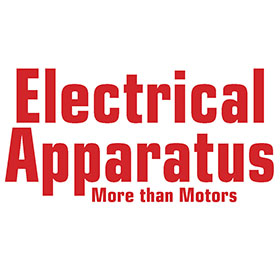Collaborative new project delivers rare earth-free motors without compromising performance.
The electric motor industry stands at a crossroads. While permanent magnet motors dominate the light mobility sector, accounting for more than 95% of applications in e-bikes, scooters and micro-vehicles, their reliance on rare earth materials presents mounting challenges. Supply chain vulnerabilities, cost volatility and environmental concerns have engineers scrambling for alternatives that don't compromise performance.
At CWIEME Berlin 2025, two European innovators, Miša Milosavljević from IFP Energies nouvelles and Vincent Mallard from MOV’NTEC, presented a breakthrough solution that challenges conventional processes. Achieving near-perfect motor efficiency while virtually eliminating rare earth dependency. Their work represents a shift that could reshape the future of light mobility.
The scale of dependency on rare earth materials is staggering. Miša Milosavljević from IFP Energies nouvelles explained that in the light and micro vehicle sector over 95% of applications use permanent magnet motors, which contain rare earth elements. This extreme concentration makes the sector particularly vulnerable to the rare earth supply chain issues. Creating what he calls ‘a high risk of supply chain.’ Driven by the industry's motivation to move away from this dependence, MOV'NTEC and IFP Energies are currently collaborating on the HeSy Mobility project. Milosavljević noted the need for this project, stating: "We have quite a good motivation to propose European alternatives in order to try to keep jobs in Europe."
The project, backed by the European Union, targets applications ranging from L6 and L7 category light mobility vehicles (two and three wheelers) to agricultural applications and agricultural robots.
The solution centres on what Milosavljević describes as "an innovative rotor’’ which uses reluctance, which means that the motor produces the torque even without permanent magnets. The solution is assisted by low-cost, ferrite permanent magnets without strategic heavy rare earth elements.
While ferrite magnets have three times less performance and power than the equivalent neodymium, they prove "sufficient to boost the efficiency of the motor at the specified values." The result? Maximum efficiency, which is nearly 96% with the 6kW model delivering 94% efficiency.
The stator design represents equally significant innovation. 'The innovation in the stator is one of the biggest on this motor because usually we have many turns and just a few parallel wires,' Milosavljević explained. 'This specification of very high continuous power, air-cooled models requires two, three and four turns only, with more than 20 parallel wires.' This approach, while 'very challenging for the production tooling,' enables exceptional air-cooled performance.
The motor range was developed with "retarded differentiation in mind," meaning they replace only the length of the motor by the number of stacks assembled. This approach creates 2kW, 4kW and 6kW versions with natural convection cooling. In other words, it does not use blowers.
The efficiency gains prove particularly valuable for light mobility applications. "This is very important for light speed limited vehicles, which are almost in that strategic zone," Milosavljević noted, explaining how the design "minimises the battery energy consumption and thus can reduce the powertrain cost."
The project emphasises complete European production. "We integrate all processes in-house, like winding machine, welding machine, magnetisation machine and so on," Mallard explained. "In Europe, we can find the best-in-class winding machine technologies."
The environmental impact results are striking. Their lifecycle assessment shows up to a 75% reduction in greenhouse gas emissions with European production compared to Asian production. This stems from using recycled material, copper, aluminium and steel and adopting a no-waste approach to the production.
Crucially, the motors are designed for end-of-life sustainability. All the sensors, bearings, and even the stator are repairable and accessible very easily through a couple of screws. Milosavljević noted; ‘this easy disassembling and architecture allows us to have easy and clean material collection when the motor has finished its career."
The project represents just the beginning. The team is expanding to 15 kilowatt motors, also in low-voltage applications, and focusing on the development of their own power electronics.
By proving that high efficiency and rare earth independence can coexist, this European initiative points toward a future where sustainable mobility doesn't require performance compromises. The breakthrough may finally offer the industry a path beyond the rare earth dilemma.
Join industry leaders, engineers, and innovators at CWIEME Berlin 2026, where cutting-edge technologies in the motor and automotive industries are showcased. Register now to be part of the conversations that will define tomorrow's mobility landscape.
Image courtesy of Emobility Engineering.
At CWIEME Berlin 2025, two European innovators, Miša Milosavljević from IFP Energies nouvelles and Vincent Mallard from MOV’NTEC, presented a breakthrough solution that challenges conventional processes. Achieving near-perfect motor efficiency while virtually eliminating rare earth dependency. Their work represents a shift that could reshape the future of light mobility.
Breaking free from rare earth material dependency
The scale of dependency on rare earth materials is staggering. Miša Milosavljević from IFP Energies nouvelles explained that in the light and micro vehicle sector over 95% of applications use permanent magnet motors, which contain rare earth elements. This extreme concentration makes the sector particularly vulnerable to the rare earth supply chain issues. Creating what he calls ‘a high risk of supply chain.’ Driven by the industry's motivation to move away from this dependence, MOV'NTEC and IFP Energies are currently collaborating on the HeSy Mobility project. Milosavljević noted the need for this project, stating: "We have quite a good motivation to propose European alternatives in order to try to keep jobs in Europe."
The project, backed by the European Union, targets applications ranging from L6 and L7 category light mobility vehicles (two and three wheelers) to agricultural applications and agricultural robots.
Reluctance-assisted design
The solution centres on what Milosavljević describes as "an innovative rotor’’ which uses reluctance, which means that the motor produces the torque even without permanent magnets. The solution is assisted by low-cost, ferrite permanent magnets without strategic heavy rare earth elements.
While ferrite magnets have three times less performance and power than the equivalent neodymium, they prove "sufficient to boost the efficiency of the motor at the specified values." The result? Maximum efficiency, which is nearly 96% with the 6kW model delivering 94% efficiency.
The stator design represents equally significant innovation. 'The innovation in the stator is one of the biggest on this motor because usually we have many turns and just a few parallel wires,' Milosavljević explained. 'This specification of very high continuous power, air-cooled models requires two, three and four turns only, with more than 20 parallel wires.' This approach, while 'very challenging for the production tooling,' enables exceptional air-cooled performance.
Smart design for real-world applications
The motor range was developed with "retarded differentiation in mind," meaning they replace only the length of the motor by the number of stacks assembled. This approach creates 2kW, 4kW and 6kW versions with natural convection cooling. In other words, it does not use blowers.
The efficiency gains prove particularly valuable for light mobility applications. "This is very important for light speed limited vehicles, which are almost in that strategic zone," Milosavljević noted, explaining how the design "minimises the battery energy consumption and thus can reduce the powertrain cost."
European manufacturing and sustainability
The project emphasises complete European production. "We integrate all processes in-house, like winding machine, welding machine, magnetisation machine and so on," Mallard explained. "In Europe, we can find the best-in-class winding machine technologies."
The environmental impact results are striking. Their lifecycle assessment shows up to a 75% reduction in greenhouse gas emissions with European production compared to Asian production. This stems from using recycled material, copper, aluminium and steel and adopting a no-waste approach to the production.
Crucially, the motors are designed for end-of-life sustainability. All the sensors, bearings, and even the stator are repairable and accessible very easily through a couple of screws. Milosavljević noted; ‘this easy disassembling and architecture allows us to have easy and clean material collection when the motor has finished its career."
The project represents just the beginning. The team is expanding to 15 kilowatt motors, also in low-voltage applications, and focusing on the development of their own power electronics.
By proving that high efficiency and rare earth independence can coexist, this European initiative points toward a future where sustainable mobility doesn't require performance compromises. The breakthrough may finally offer the industry a path beyond the rare earth dilemma.
Ready to explore more breakthrough innovations shaping the future of mobility?
Join industry leaders, engineers, and innovators at CWIEME Berlin 2026, where cutting-edge technologies in the motor and automotive industries are showcased. Register now to be part of the conversations that will define tomorrow's mobility landscape.
Image courtesy of Emobility Engineering.




















